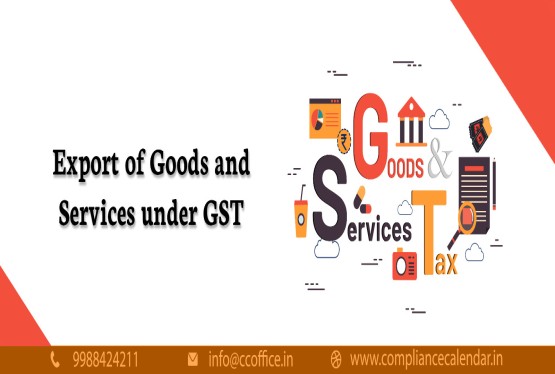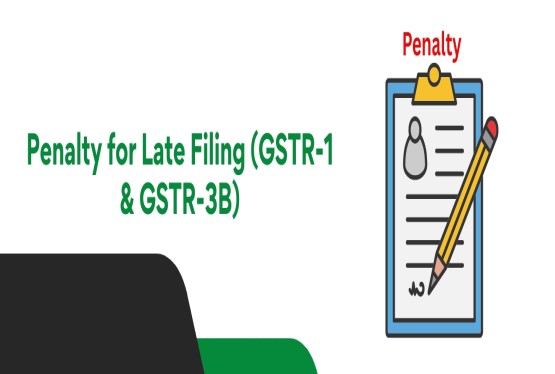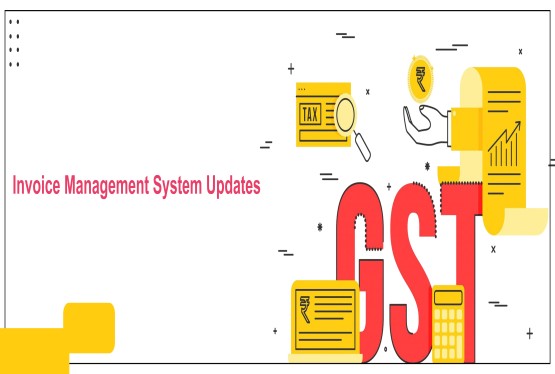Exporters dealing in goods or services often face the challenge of paying Integrated Goods and Services Tax (IGST) on exports and later claiming a refund. This refund process involves heavy documentation and delays, especially affecting businesses with tight cash flows. To ease this burden, the Goods and Services Tax (GST) system allows the use of a Letter of Undertaking (LUT). By filing an LUT Under GST, exporters can carry out their export activities without the requirement of paying IGST upfront. This article explains in detail what a Letter of Undertaking (LUT) under GST means, who can file it, the procedure to file LUT, its validity, required documents, benefits, and important compliance points.
What is the Letter of Undertaking (LUT) Under GST?
A Letter of Undertaking (LUT) under GST is a declaration submitted by an exporter to the GST authorities stating that they will fulfill all the obligations related to exporting goods or services without payment of IGST. It allows the exporter to avoid the hassle of claiming tax refunds, as they are exempted from making tax payments at the outset.
The LUT serves as a commitment to comply with all the GST laws and rules applicable to exports. As per Rule 96A of the CGST Rules, 2017, any registered person exporting goods or services without payment of IGST must furnish an LUT in Form GST RFD-11. It eliminates the need for exporters to initially pay IGST and later go through the refund process.
Eligibility Criteria to Apply for LUT Under GST
To file a GST LUT, the exporter must fulfill specific eligibility conditions. Firstly, the entity must be registered under the GST law and possess a valid GSTIN. Exporters planning to supply goods or services internationally or to Special Economic Zones (SEZs) can submit the LUT.
Additionally, the exporter must have a clean track record with no prosecution history under the CGST Act, the IGST Act, or any other existing laws involving tax evasion of more than Rs. 250 lakh. The LUT can be submitted by any GST-registered entity intending to supply goods or services without paying IGST upfront.
The declaration in the LUT must confirm the exporter’s intention to fulfill all compliance requirements and export goods or services within the timelines prescribed under the law.
Validity of LUT Under GST
Once submitted, the LUT under GST remains valid for the entire financial year in which it is furnished. This means that the exporter does not need to file a new LUT for every export transaction during that financial year. However, a fresh LUT must be filed at the beginning of each financial year.
According to GST provisions, if the exporter fails to export goods within three months from the date of invoice or fails to receive payment for export of services within one year, they are liable to pay the applicable GST along with interest at 18% within 15 days. Non-compliance with this condition may result in the withdrawal of the LUT facility.
Documents Required for Filing LUT Under GST
To ensure smooth processing of the LUT application, the exporter must keep the following documents ready:
-
LUT Cover Letter: A formal request for LUT acceptance signed by the authorized signatory of the business.
-
GST Registration Certificate: Proof of registration under GST, confirming the legal standing of the entity.
-
PAN Card: The entity’s Permanent Account Number (PAN) for verifying tax identity.
-
KYC Documents: Know Your Customer (KYC) details of the authorized signatory, which includes ID and address proof.
-
Form GST RFD-11: This form is mandatory under GST rules for filing the LUT.
-
Import Export Code (IEC): A copy of the IEC (Import Export Code), which validates the entity's authority to engage in international trade.
-
Canceled Cheque: This helps confirm the bank account details of the exporter.
-
Authorization Letter: A letter authorizing an individual to represent the company in matters related to LUT filing.
All these documents ensure that the LUT is processed without delay and that the business is legally compliant.
How to File LUT Online Under GST?
Filing the Letter of Undertaking (LUT) under GST has been simplified through the GST portal. The following step-by-step process guides you through the online submission:
-
Go to the official GST portal and log in with your username and password.
-
Click on the 'Services' tab, select 'User Services', and then choose 'Furnishing Letter of Undertaking (LUT)'.
-
The screen will display Form GST RFD-11.
-
Choose the relevant financial year for which you are filing the LUT.
-
If you have an earlier LUT, you can upload the previous version by clicking on 'Choose File'.
-
Attach offline LUTs, if any, to maintain continuity in the records.
-
Tick the three checkboxes to confirm that you agree with the terms and conditions of the LUT.
-
Enter the name and address of two witnesses in the specified field.
-
Fill in the location where the application is being filed.
-
Choose the name of the person authorized to sign the form.
-
Click the 'PREVIEW' button to review your filled-in form.
-
Save the form or proceed directly to sign it using DSC or EVC.
-
After verifying all details, click on 'SIGN AND FILE WITH DSC' or 'SIGN AND FILE WITH EVC'. Once submitted, you cannot make any edits.
This online method saves time, minimizes paperwork, and allows exporters to obtain their LUT certificate efficiently.
Advantages of Filing LUT for Exporters
Filing LUT under GST offers several benefits to exporters. These benefits not only improve business efficiency but also help in maintaining cash flows.
-
Exporters do not need to pay IGST on exports, which leads to better liquidity. This helps the business avoid blocking funds in tax payments and waiting for refunds.
-
Since there is no need to claim tax refunds, exporters can avoid the lengthy and often delayed refund process, saving valuable time.
-
Working Capital Remains Unblocked, allowing exporters to reinvest the same funds into core business activities, such as purchasing raw materials or expanding their operations.
-
Long-Term Validity of the LUT also helps reduce the burden of filing repetitive documents. A single LUT is valid for the entire financial year, easing compliance.
-
The Simplified Online Filing Process makes it more accessible to exporters from all backgrounds, including small and medium enterprises (SMEs).
-
Regulatory Compliance is ensured when exporters file LUTs properly. It keeps the business in good legal standing and avoids penalties for non-compliance.
Important Points Related to LUT
There are some key compliance and procedural points every exporter should keep in mind regarding GST LUT:
-
Validity Period: The LUT remains valid for one financial year. It must be renewed annually to continue availing tax exemptions on exports.
-
Non-Compliance Consequences: If goods are not exported within three months or payment for export of services is not received within one year, the exporter must pay GST with interest.
-
Revocation of LUT Facility: Non-compliance may lead to withdrawal of the LUT facility, and the entity may be required to furnish a bond for further exports.
-
Bond in Absence of LUT: Entities that cannot furnish LUT must submit a bond on non-judicial stamp paper with a bank guarantee. The guarantee amount should not exceed 15% of the bond amount. The Commissioner may waive the guarantee requirement.
-
Form on Letterhead: The LUT must be filed on the official letterhead of the business. This ensures authenticity and reflects the exporter’s intent to comply with GST laws.
-
Authorized Filing: The form should be submitted by a competent person like a Managing Director, Partner, or Company Secretary of the firm.
-
Easy Download of LUT Certificate: Exporters can download the LUT certificate from the GST portal once approved, which helps in recordkeeping and providing proof of compliance when needed.
It is important that exporters keep track of deadlines and file their LUT before the financial year begins to avoid any disruption in their export operations.
Conclusion
Filing a Letter of Undertaking (LUT) under GST is an important step for exporters who wish to export goods or services without paying IGST upfront. It simplifies compliance, improves liquidity, and enhances the overall efficiency of export operations. Exporters must ensure timely filing of the LUT, adhere to all conditions, and submit the required documents carefully.
By avoiding the burden of tax refunds and optimizing working capital, LUT Under GST becomes an essential compliance tool for businesses engaged in international trade. Those who face difficulties in the filing process or require assistance with documentation can consult GST experts to ensure a smooth and compliant experience.
Whether you are a small exporter or a large enterprise, filing the LUT under GST is a smart business move that aligns with both financial and regulatory best practices.
Frequently Asked Questions (FAQs)
Q1. Who is eligible to file an LUT under GST?
Ans. Only GST-registered exporters who have not been prosecuted for tax evasion exceeding Rs.2.5 crore and have a clean compliance record can file an LUT. This includes businesses engaged in the export of goods or services or those supplying to SEZ units.
Q2. What is the validity period of an LUT, and is renewal necessary?
Ans. An LUT is valid for one financial year (April to March). Exporters must renew the LUT every year to continue availing of the IGST exemption on exports.
Q3. What happens if I fail to comply with the terms of an LUT?
Ans. Failure to comply with the LUT terms—such as not exporting within the stipulated time—can result in revocation of the LUT facility. In such cases, the exporter will have to furnish a bond with a bank guarantee for future export transactions.
Q4. Can service exporters also file an LUT under GST?
Ans. Yes, both goods and service exporters are eligible to file an LUT, provided they meet the other eligibility criteria. This allows them to export services without paying IGST upfront.
Q5. What’s the difference between an LUT and a bond under GST?
Ans. An LUT is a self-declaration for compliant exporters, while a bond is required for those not meeting LUT conditions. A bond typically requires non-judicial stamp paper and may involve a bank guarantee of up to 15% of the bond’s value.

_Under_GST_learn_crop6_thumb.jpg)






_crop10_thumb.jpg)


















































































_for_FY_2025-26_crop10_thumb.jpg)












_learn_crop10_thumb.jpg)








_Filing_Due_Dates_for_FY_2024-25_learn_crop10_thumb.jpeg)







































_of_GST_Act_learn_crop10_thumb.jpg)



















_crop10_thumb.jpg)


_crop10_thumb.jpg)






_learn_crop10_thumb.jpg)






















_of_the_Income_Tax_Act_learn_crop10_thumb.jpg)



_learn_crop10_thumb.jpg)






_learn_crop10_thumb.jpg)






_crop10_thumb.jpg)




















_in_The_Income_Tax_Act,_1961_learn_crop10_thumb.jpg)



_learn_crop10_thumb.jpg)



_of_the_Income_Tax_Act_learn_crop10_thumb.jpg)


_Of_Income_Tax_Act_learn_crop10_thumb.jpg)








_learn_crop10_thumb.jpg)








_learn_crop10_thumb.jpg)
_crop10_thumb.jpg)






















_learn_crop10_thumb.jpg)
_for_Import_and_Export_learn_crop10_thumb.jpg)



























